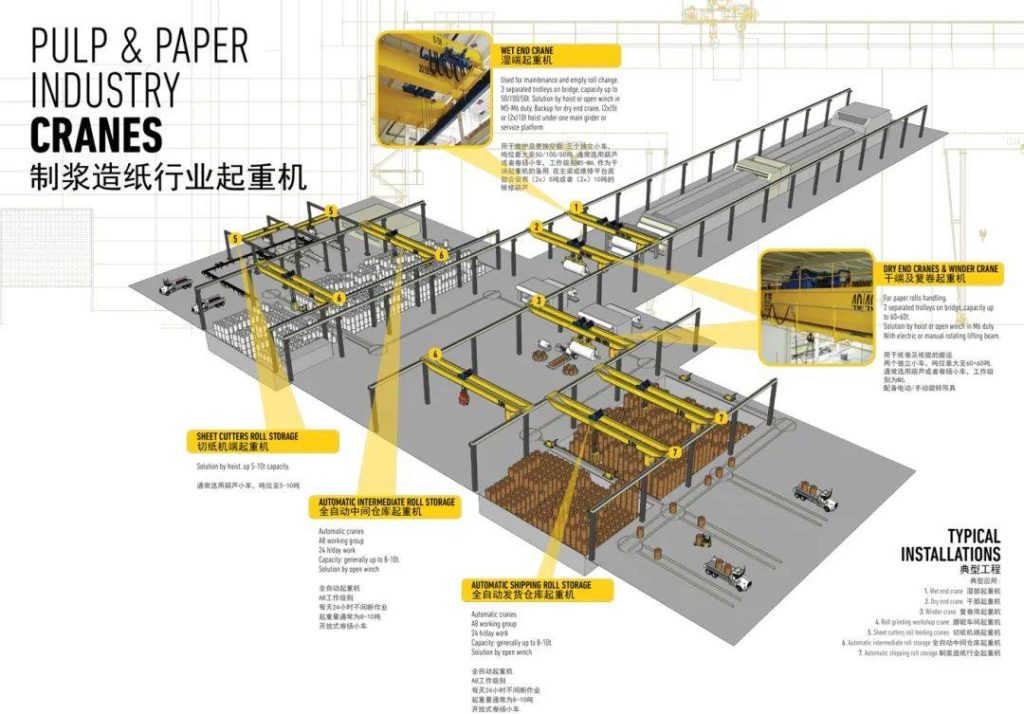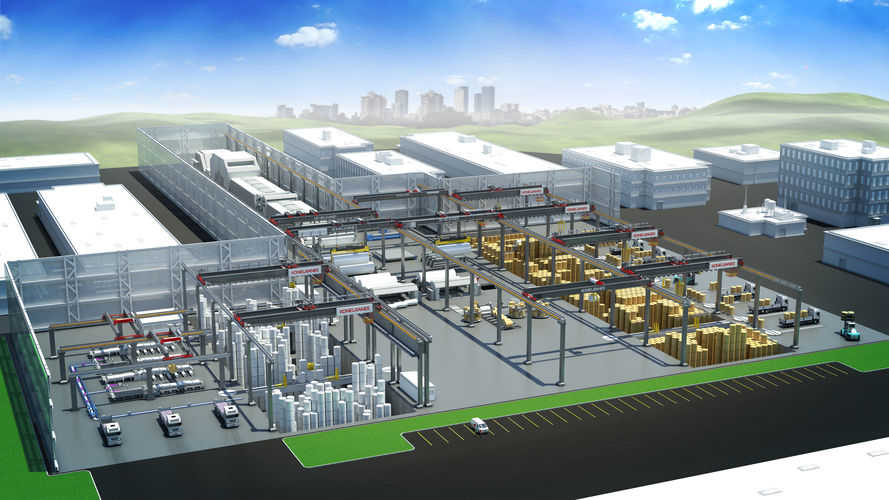Pulp and paper industry
For decades, Dongqi has contributed to the productivity of the pulp and paper industry. Whether you’re lifting raw pulp into treatment vats, or taking finished parent rolls off the main production line we offer cranes and services designed to help you work more safely and effectively.
Crane Equipment for Pulp and Paper Industry
Gantry crane: A gantry crane handles the unloading and storing of logs at a pulp mill as well as the feeding of this material into the mill. The wood must be prepared for processing through sorting according to specifications on species, cleanliness and dimensions; organizing so that the mill can maintain a constant feed rate; and collecting reject material for disposal. If the raw logs or pieces of wood are not yet ready for pulping, the mill may also have to convert it into material suitable for pulping in processes such as debarking, sawing, chipping, and screening.
Parent roll handling cranes: A parent roll handling crane, also known as a dry end crane or winder crane, lifts the rolls of paper produced in a paper mill from the winding station. First, the paper needs to be dried, then passed through calenders to form its thickness, after which it is put on a storage rack, or placed on a transfer car for delivery to another part of the plant for coating or cutting. The empty spool shafts go back to the paper machine winder’s storage rails. Typically, there are one or two roll changes per hour.
Workshop cranes: Workshop cranes play crucial role in a modern pulp and paper plant, where it supports the main processes in both the mechanical workshop and the roll grinding workshop, as well as parts storage, loading and unloading materials and workstation management.
A jib crane with a electric chain hoist is a versatile piece of lifting equipment. It supports overhead cranes on production lines and keeps workstations running. Dongqi jib cranes are suitable for almost any kind of workstation, supports overhead cranes on production lines, storage areas and loading bays.
Auxiliary handling: An auxiliary crane is a crane used in a paper manufacturing plant to support raw material handling and help with maintenance tasks. Basically, it is a spare crane that can replace the main lifting equipment in case of unexpected downtime, or it can assist in repairs or service, minimizing any delays to production.

Expertise for Pulp and Paper Industry
Pulp and paper is an industry tailor-made for automation. When it comes to choosing the right level of automation, it’s important to understand the nature of what you are machining as well as your specific requirements and capabilities. In several critical areas of the mill, automated cranes can help reduce labor costs, optimize storage, track inventory, reduce roll damage, increase productivity and lower the capital expense associated with forklift systems. Moving into the future, automation is taking an ever-larger role in promoting mill safety, productivity and profitability.
Semi-automation involves an operator picking the load and then pressing a button to instruct the crane to deliver it to a pre-determined destination. Our cranes already include many features to help maximize safety and productivity. Movements and cycles are automatically controlled, minimizing human error. Konecranes Smart Features help improve safety, cycle times and load positioning, delivering major benefits when performing repetitive actions and are particularly useful on automated cranes.

Customer Reference Stories
A French company that produces different types of cardboard for various industries had previously requested Dongqi to install an aluminum gantry crane for corrective maintenance of the facility.
Dongqi Crane recommends installing a 360 degree rotary electric jib crane that can handle loads of up to 1.6 tons, including a weight of 100 kilograms of lifting equipment beams.
The company now uses forklifts to transport the bags to the jib crane, and then hangs the lifting beam on the four handles of the bags. The electric lifting arm of the rotary arm crane lifts the bag, rotates it 180 degrees, and then puts the bag into the hopper.
The project must consider insufficient facility space, and the jib crane must pass under a 5m high crane, with a total installation height requirement not exceeding 4.73m. The reason for choosing an electric wire rope hoist suitable for loads ranging from 500 kilograms to 5 tons is because it requires minimal space and minimizes the loss of clearance under the hook. The lifting motor has two mechanical variable speeds, one two speed travel motor, and a fully sealed reduction gear, providing precise and quiet movement.
